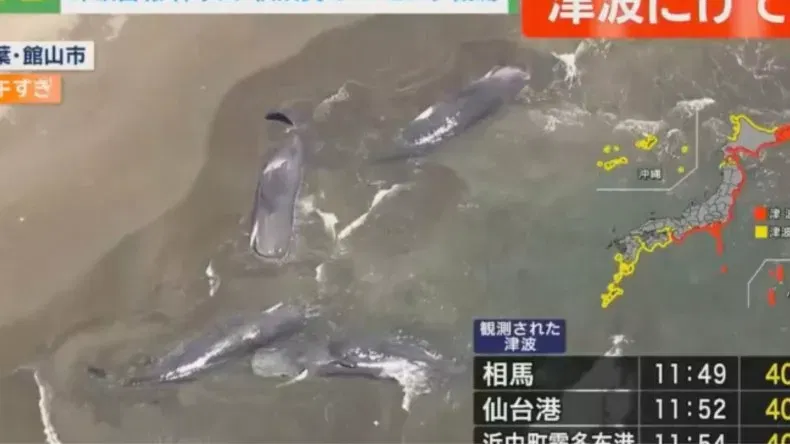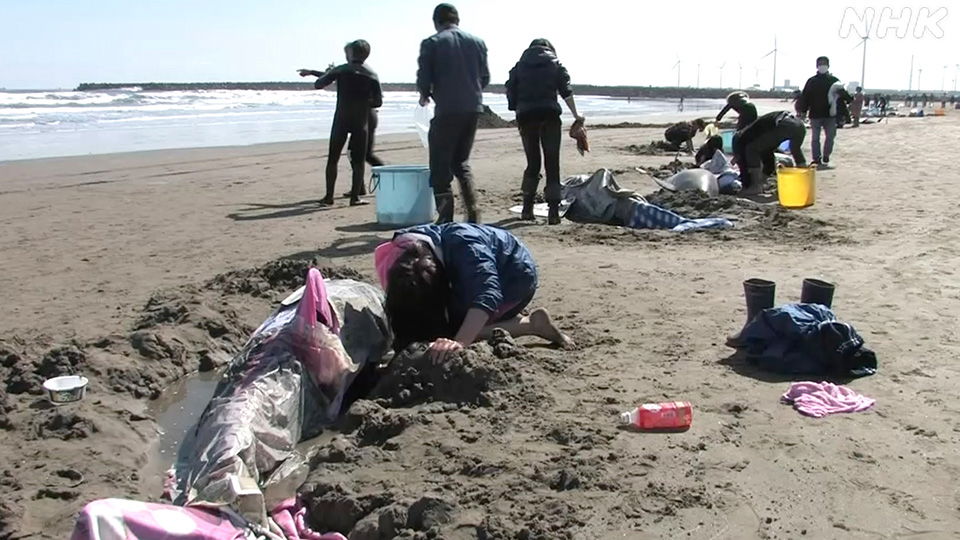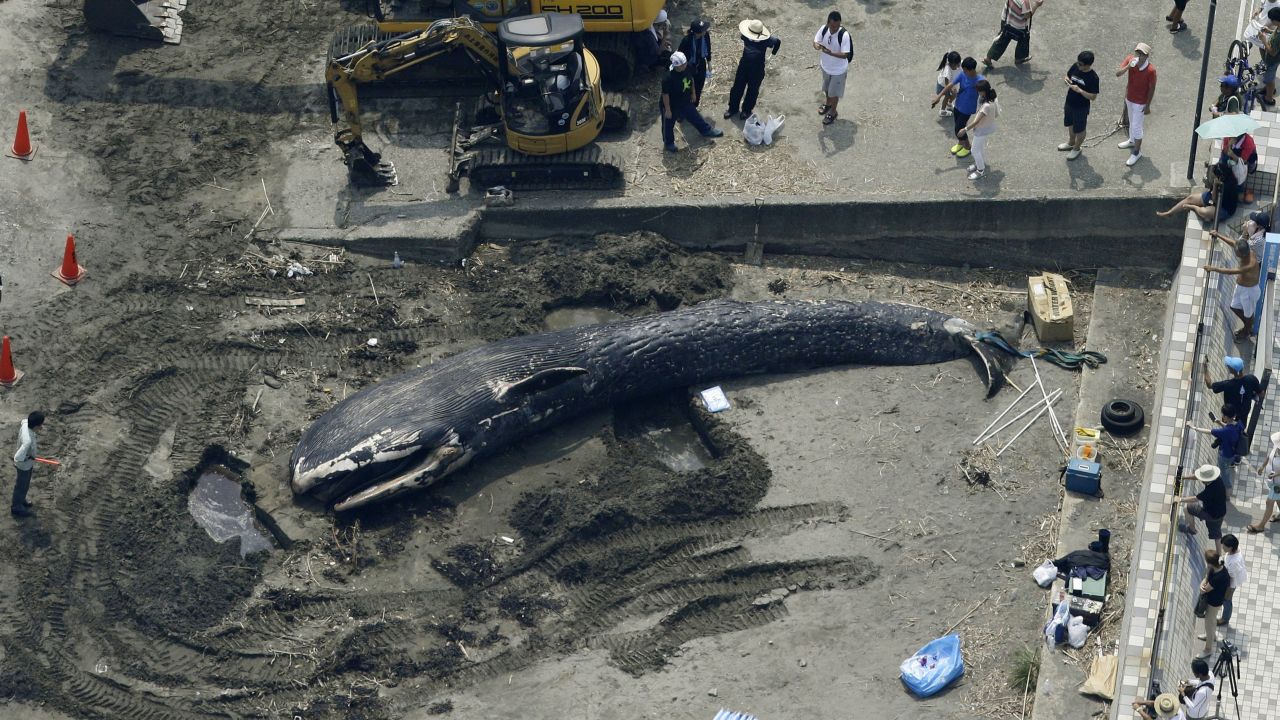On July 30, 2025, a powerful 8.7 magnitude earthquake struck off the coast of Russia’s Kamchatka Peninsula, triggering a tsunami warning across the Pacific region, including Japan. While the tsunami itself caused minimal damage—with waves around 60 centimeters recorded in Hokkaido, Ibaraki, and other eastern coastal prefectures—it was what followed that left many stunned and searching for answers.

In Tateyama City, located in Chiba Prefecture, residents discovered a disturbing sight: a group of whales had washed ashore, some already lifeless. The scene, both tragic and mysterious, quickly drew the attention of scientists, media, and the public alike.
Why Do Whales Wash Ashore?
This isn’t the first time such a phenomenon has occurred, but the timing—just hours after a massive undersea quake—raises unsettling questions. Experts offer several explanations:
Tsunami Dynamics:
As part of the natural mechanics of a tsunami, water along the coastline may recede dramatically before the wave strikes. Whales swimming near the shore can be caught in this sudden suction and left stranded when they’re unable to retreat in time.
“It’s similar to draining a bathtub,” explained a marine scientist from the University of Tokyo. “Objects near the edges are often pulled to the bottom.”

Disrupted Echolocation:
Whales rely on echolocation—using sound waves to navigate the ocean. But seismic activity can distort underwater currents and pressure, scrambling their internal compass. Disoriented, whales may swim toward land instead of away from it.
The Domino Effect:
Whales are highly social creatures. When one becomes disoriented or stranded, others often follow out of instinct or solidarity. This herd behavior can tragically lead entire pods into shallow waters, unable to return to sea.
🚨#BREAKING: Now, at least four whales have washed ashore along Japan’s coastline, just hours after a massive 8.8-magnitude earthquake rocked the region triggering tsunami Warnings watches and advisories pic.twitter.com/Res680IpSn
— R A W S A L E R T S (@rawsalerts) July 30, 2025
A Spiritual Symbol — Or a Scientific Signal?
In Japanese culture, many view such events as celestial signs—omens warning of future disasters. In fact, before the 2011 Tōhoku earthquake and tsunami, locals reported unusual animal behaviors, including similar whale strandings.
But is there scientific proof that whales can sense earthquakes?
So far, no direct evidence exists linking whale strandings to earthquake prediction. While whales are sensitive to changes in their environment, scientists caution against jumping to conclusions without hard data.
However, there may be another warning hidden in plain sight.

Climate Change: The Silent Culprit?
Beyond seismic events, researchers point to climate change as a major factor in the increasing number of whale strandings worldwide. Rising ocean temperatures, disrupted currents, and growing underwater noise pollution from ships and human activity are altering whales’ natural migration patterns.
Such disruptions can easily lead whales into unfamiliar or dangerous territory—like the shallow coastlines of Japan, New Zealand, Australia, and elsewhere—where they risk becoming beached.
This latest stranding is part of a troubling global trend. And whether it’s caused by quakes or warming seas, the message remains the same: our oceans—and their inhabitants—are under growing stress.

A Wake-Up Call from the Deep
The image of majestic whales lying helpless on the sand is not just heartbreaking—it’s a mirror reflecting the urgent state of our planet. Whether seen as a sign from heaven or a cry for help from nature, this phenomenon reminds us of the fragile balance between humanity and the natural world.
We may not yet fully understand why these creatures come ashore in moments like this. But one thing is clear: when the ocean speaks, we must listen.
If we fail to act on the warning signs—both spiritual and scientific—we may soon find ourselves facing consequences far greater than a stranded whale.


